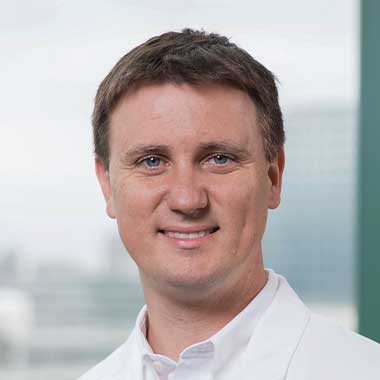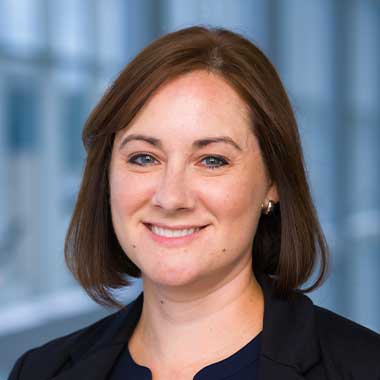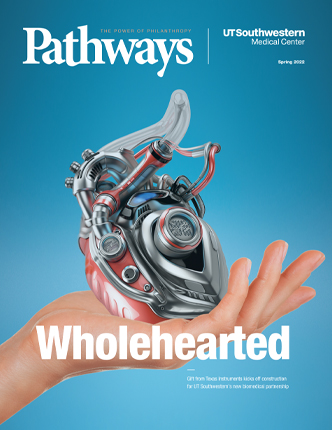Blueprint for the Future
Empowered by philanthropy, UT Southwestern continues to pursue advances for genetic diseases
Since establishing its gene therapy program four years ago, UT Southwestern Medical Center has made great strides, hiring researchers, unlocking insights, and developing new therapeutics for clinical trials.
“Our vision has been ambitious. We want to get these treatments out of the lab and into the clinic,” said Steven Gray, Ph.D., an Associate Professor in UT Southwestern’s Department of Pediatrics.
Out of about 30 diseases that scientists are studying at the Medical Center for potential gene therapy treatment, six have been approved for clinical trials. Another six are expected to be approved this year.

Working with Berge Minassian, M.D., Division Chief of Pediatric Neurology, Dr. Gray has seen marked growth in gene therapy research at the institution thanks to philanthropic and institutional support.
The duo’s team has grown to 70 researchers and six independent research labs. Together, they’re pursuing possible gene therapy solutions for more than 30 diseases, including giant axonal neuropathy, which can be thought of as a childhood version of Lou Gehrig’s disease.
“One of our primary goals is to develop a way to use gene therapy to treat one disease and then reconfigure that approach to treat hundreds of other diseases,” Dr. Gray said.
A harmless virus is used to deliver a gene into a patient’s cell, kind of like a biological version of a mail truck. Once scientists have a working delivery method, they hope to use it to deliver genetic therapies for a range of other conditions, such as Tay-Sachs disease, by simply loading the truck with a different genetic package.

Rachel Bailey, Ph.D., Assistant Professor of Pediatrics, is pursuing gene therapies for a trio of pediatric disorders with intimidating names: multiple sulfatase deficiency, SLC13A5 deficiency, and ECHS1 deficiency. Patients with these diseases have changes in their DNA that prevent their bodies from producing specific proteins that allow cells to function properly.
Dr. Bailey is developing genetic instructions that can help patients’ bodies produce the missing protein with the hope of one day helping them live healthier lives.
“If we can successfully give a patient a copy of that blueprint, then their cells can make the protein they need,” said Dr. Bailey, who is also an Assistant Professor with UT Southwestern’s Center for Alzheimer’s and Neurodegenerative Diseases.
Before qualifying for federal research grants or undertaking clinical trials, researchers often rely on philanthropic support from patient advocacy groups and private foundations to fund initial stages of gene therapy research and demonstrate the potential of a therapy.
“Research on many of these genetic disorders was supported by the philanthropic vision of patient families,” Dr. Bailey said. “It would have been impossible to do this work without their support.”
Dr. Gray also acknowledges philanthropy’s impact on early gene therapy research. “My biggest gratitude goes to those who believed in and supported our research at a time when nobody else would,” he said. “Even when the science makes sense, it often can’t move forward without investment.”
Dr. Minassian holds the Jimmy Elizabeth Westcott Distinguished Chair in Pediatric Neurology.

